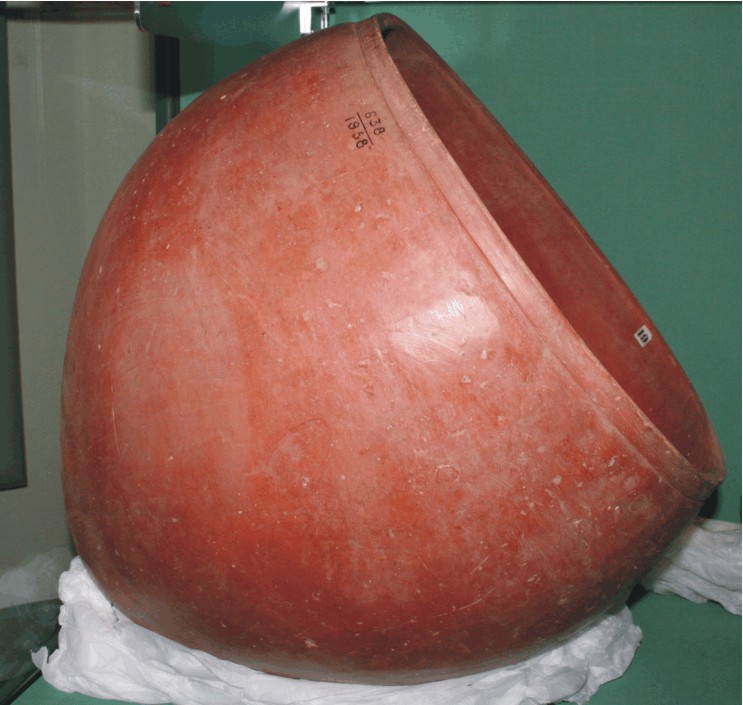W83
W83

This large, wide-mouthed pottery vessel has a burnished slip. It is 40.5cm high. We are not sure of its provenance. The excavation number ‘638/1958’ might suggest that this comes from Naqada. It was purchased by Wellcome from the Rustafjaell collection in 1907. Vessels like this usually date from the Predynastic to Early Old Kingdom and many were used to contain the remains of the deceased. Often pots were inverted over the bodies. Pot burials have been found at el-Kab, el-Amrah, Reqaqna, Ballas, Naqada, Hierakonpolis and Abydos (Peet and Loat, 20-22, pl. 4 with further references) and Minshat Abu Omar (Kroeper 1994). An example with a burial is held by the Petrie Museum (UC14857). There is no evidence that pot burials correlated with any particular class of people. Such large vessels are known in Arabic as majur. Petrie (1896, 42) writes ‘In tombs of the Old Kingdom at Ballas burials were found in large bowls, and in square pottery cists or coffins, made in imitation of woodwork. Mr Quibell states that large circular pots were found lying mouth up with contracted burials inside, and also were inverted over burials. They occurred in the groups of staircase tombs, and are similar to some pots found by the Giza hotel.’ Plate 44 in the same volume shows a similar pot.
Other Predynastic objects in the Egypt Centre
Further Reading Kroeper, K. 1994. ‘Minshat Abu Omar. Pot Burials Occurring in the Dynastic Cemetery’. Bulletin de Liaison du groupe International d’Étude de la Céramique Égyptienne, 18, 19-32. Peet, T.E. and Loat, W.L.S. 1913. The Cemeteries of Abydos. Part III. 1912-1913. London: Egypt Exploration Fund. Petrie, W.M.F. 1895. Naqada and Ballas. London: Bernard Quaritch.